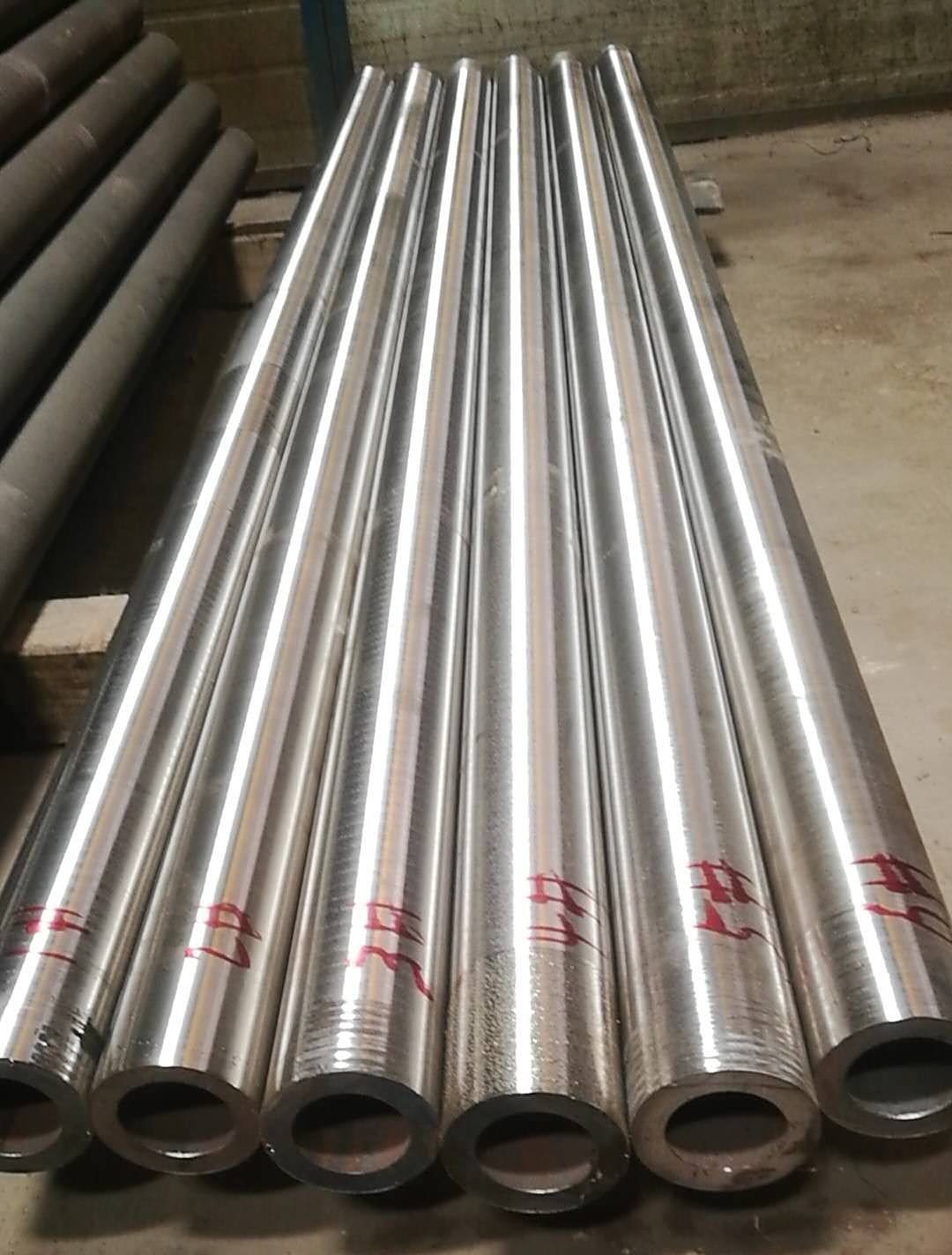
Incoloy 800 Nickel Alloy Steel Pipe and Incoloy 800HT Seamless Steel Tubing: Properties, Applications, and Market Insights
Abstract
Incoloy 800 and Incoloy 800HT, nickel-iron-chromium alloys, are renowned for their exceptional resistance to high-temperature oxidation, carburization, and corrosion, making them critical in industries such as petrochemical processing, power generation, and feed additive production. Incoloy 800 pipes (ASTM B407 UNS N08800) offer robust mechanical strength and corrosion resistance, while Incoloy 800HT seamless tubing (ASTM B163 UNS N08811) provides enhanced creep and rupture strength due to higher carbon, aluminum, and titanium content. These materials are vital in applications like heat exchangers and process piping, including in facilities producing feed additives like chicken liver powder and choline chloride, where corrosion resistance is essential. The global market for Incoloy 800/800HT is projected to grow at a CAGR of 5.2% from 2025 to 2032, driven by demand in energy and chemical sectors. This report examines the material properties, manufacturing processes, applications, and market trends of Incoloy 800 pipes and 800HT tubing, highlighting their role in high-temperature environments and synergy with feed additive industries. Challenges include raw material price volatility, but opportunities lie in sustainable manufacturing and expanding industrial applications.
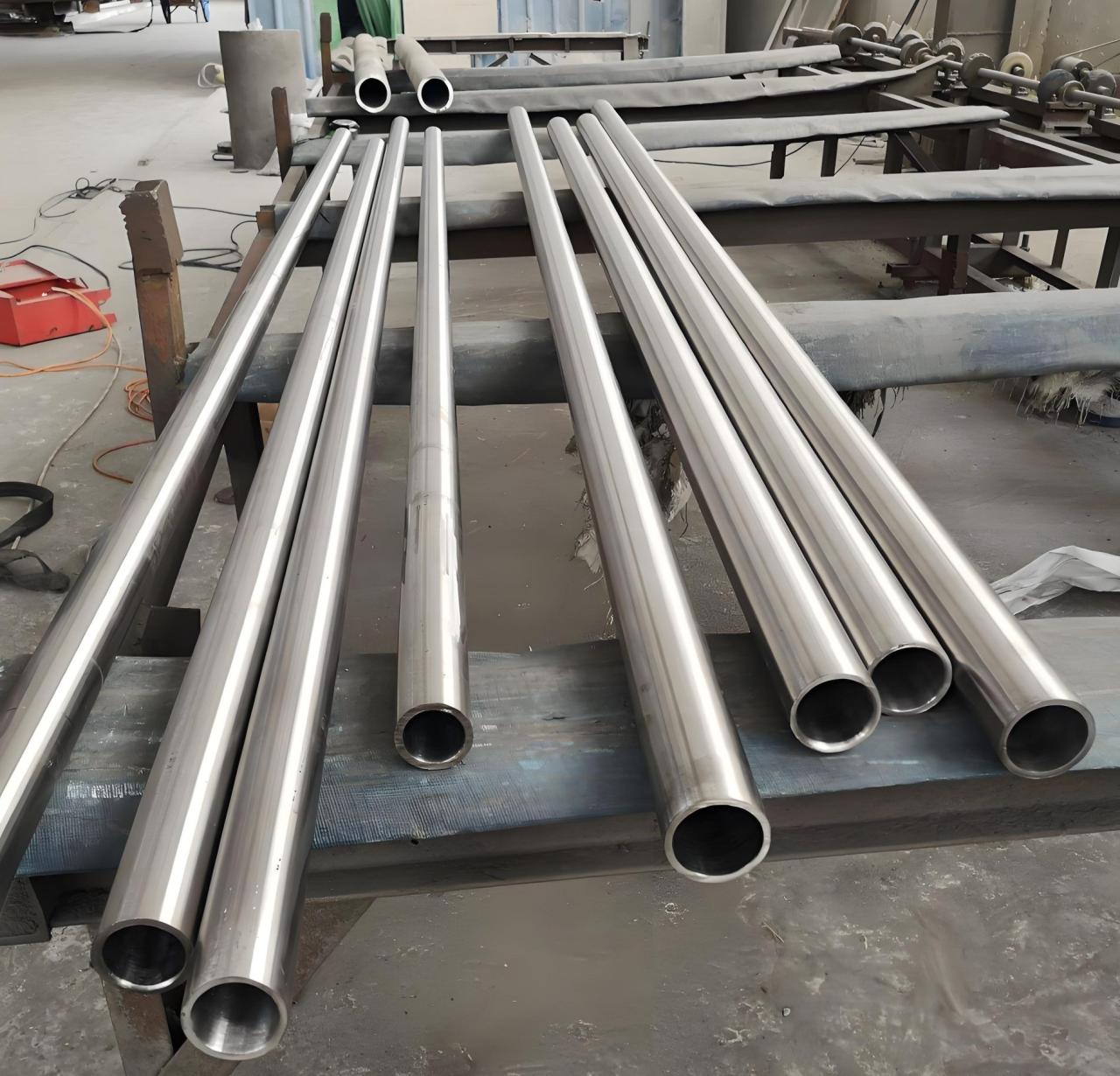
1. Introduction
Incoloy 800 and Incoloy 800HT are nickel-iron-chromium alloys designed for high-temperature and corrosive environments, widely used in industries requiring superior oxidation and carburization resistance. Incoloy 800 pipes, compliant with ASTM B407 UNS N08800, are valued for their general corrosion resistance and mechanical strength, while Incoloy 800HT seamless tubing (ASTM B163 UNS N08811) is engineered for enhanced creep and rupture properties at temperatures above 1100°F (593°C), due to controlled carbon (0.06–0.10%) and additions of aluminum and titanium (up to 1.20%). These alloys are critical in applications such as heat exchangers, process piping, and furnace components, including in facilities producing feed additives like chicken liver powder and choline chloride, where equipment must withstand corrosive gases and high temperatures. The global market for Incoloy 800/800HT is expected to grow at a CAGR of 5.2% from 2025 to 2032, driven by demand in petrochemical, power generation, and feed processing industries. This report provides a comprehensive analysis of the material properties, manufacturing processes, applications, and market dynamics of Incoloy 800 pipes and 800HT tubing, emphasizing their role in high-performance applications and their relevance to feed additive production. By integrating technical data and industry trends, this study aims to guide manufacturers and engineers in optimizing these alloys for demanding environments.
2. Material Properties
2.1 Chemical Composition and Mechanical Properties
Incoloy 800 and 800HT are nickel-iron-chromium alloys with distinct chemical compositions tailored for high-temperature performance. Incoloy 800 (UNS N08800) contains 30.0–35.0% nickel, 19.0–23.0% chromium, and 39.5% iron, with low carbon (≤0.10%). Incoloy 800HT (UNS N08811) has a similar base composition but with higher carbon (0.06–0.10%) and additions of aluminum and titanium (0.85–1.20%), enhancing creep and rupture strength. The nickel content ensures resistance to chloride stress-corrosion cracking and sigma phase embrittlement, while chromium provides oxidation and carburization resistance. Table 1 outlines the chemical composition. Mechanically, Incoloy 800 offers a tensile strength of 75 ksi (520 MPa) and yield strength of 30 ksi (205 MPa), with 30% elongation, per ASTM B407. Incoloy 800HT, optimized for high temperatures, exhibits superior creep strength, with stress rupture properties exceeding 10,000 hours at 1400°F (760°C). Both alloys maintain austenitic microstructures at elevated temperatures, ensuring ductility. Their corrosion resistance surpasses many stainless steels, making them ideal for harsh environments in feed additive production, such as choline chloride processing, where equipment faces acidic and high-temperature conditions. These properties position Incoloy 800/800HT as premium materials for demanding industrial applications.[
| Element | Incoloy 800 (%) | Incoloy 800HT (%) |
|---|---|---|
| Nickel (Ni) | 30.0–35.0 | 30.0–35.0 |
| Chromium (Cr) | 19.0–23.0 | 19.0–23.0 |
| Iron (Fe) | 39.5 min | 39.5 min |
| Carbon (C) | ≤0.10 | 0.06–0.10 |
| Aluminum + Titanium (Al+Ti) | 0.15–0.60 | 0.85–1.20 |
| Manganese (Mn) | ≤1.5 | ≤1.5 |
| Silicon (Si) | ≤1.0 | ≤1.0 |
Source: ASTM B407, ASTM B163
2.2 Corrosion and High-Temperature Resistance
Incoloy 800 and 800HT exhibit exceptional resistance to oxidation, carburization, and corrosion, critical for applications in high-temperature and corrosive environments. The high nickel content (30.0–35.0%) prevents embrittlement from sigma phase precipitation and resists chloride stress-corrosion cracking, while chromium (19.0–23.0%) forms a protective oxide layer, mitigating oxidation and carburization. Incoloy 800 is suitable for service up to 1100°F (593°C), resisting carburizing atmospheres in petrochemical processes. Incoloy 800HT, with enhanced aluminum and titanium content, excels above 1100°F, offering superior creep and rupture strength in environments exceeding 1500°F (816°C). Both alloys resist nitriding and sulfidation, common in feed additive production facilities processing chicken liver powder and choline chloride, where equipment encounters corrosive gases like hydrogen sulfide. Compared to stainless steels, which may fail due to intergranular corrosion or carburization, Incoloy 800/800HT maintains structural integrity, with no embrittlement even after prolonged exposure at 1200–1600°F (649–871°C). Their excellent cold-forming characteristics, akin to nickel-chromium alloys, allow for complex fabrication without compromising corrosion resistance, making them ideal for heat exchangers and piping in aggressive industrial settings.[
3. Manufacturing Processes
3.1 Seamless Pipe and Tubing Production
The production of Incoloy 800 pipes and Incoloy 800HT seamless tubing involves advanced metallurgical and manufacturing techniques to ensure high quality and performance. Incoloy 800 pipes (ASTM B407) are typically produced via seamless or welded methods. Seamless pipes are manufactured by hot extrusion of billets at 2100–2300°F (1150–1260°C), followed by cold drawing to achieve precise dimensions (4–219 mm OD, 0.5–20 mm wall thickness). Incoloy 800HT seamless tubing (ASTM B163) is produced similarly but undergoes additional annealing at 2100°F (1150°C) for 15 minutes, followed by air cooling, to optimize grain size and creep resistance. The process ensures compliance with hydrostatic or nondestructive eddy-current testing, detecting defects like transverse notches. Table 2 outlines key manufacturing parameters. Both alloys are solution-annealed to maintain austenitic structure, enhancing corrosion resistance. Quality control includes chemical analysis, hardness testing, and mechanical property evaluation (tensile strength, yield strength, elongation) per ASTM standards. These rigorous processes ensure Incoloy 800/800HT products meet the demands of high-temperature applications, such as heat exchangers in feed additive production, where precision and reliability are paramount.[
| Process | Parameter |
|---|---|
| Hot Extrusion | 2100–2300°F (1150–1260°C) |
| Annealing | 2100°F (1150°C), 15 min, air cool |
| Testing | Hydrostatic or eddy-current |
| Dimensions (Pipe) | 4–219 mm OD, 0.5–20 mm WT |
| Dimensions (Tubing) | 3.35–101.6 mm OD, 0.8–6 mm WT |
Source: ASTM B407, ASTM B163
3.2 Welded Pipe Fabrication
Welded Incoloy 800 pipes (ASTM B514) and Incoloy 800HT tubing (ASTM B515) offer a cost-effective alternative to seamless products, suitable for less demanding applications. Welded pipes are fabricated from flat-rolled alloy sheets, formed into cylindrical shapes, and welded using techniques like TIG or plasma arc welding. Welded Incoloy 800 pipes range from 5.0–1219.2 mm in diameter, with schedules from SCH 10 to SCH 80. Post-welding, pipes undergo 100% X-ray inspection to ensure weld integrity, particularly for high-pressure applications. Incoloy 800HT welded tubing is similarly produced but requires additional heat treatment to restore creep resistance in the weld zone. Both alloys exhibit excellent weldability, comparable to stainless steels, with minimal risk of hot cracking due to their nickel content. However, welded products have slightly lower strength than seamless counterparts, limiting their use in critical high-pressure systems. In feed additive production, welded Incoloy 800 pipes are used in process piping for choline chloride synthesis, where corrosion resistance is prioritized over extreme pressure tolerance. Quality assurance involves mechanical testing (flattening, flaring) and corrosion resistance evaluation, ensuring compliance with ASME standards. These processes make welded Incoloy 800/800HT a viable option for cost-sensitive industrial applications.
4. Applications
Incoloy 800 pipes and Incoloy 800HT seamless tubing are integral to industries requiring high-temperature and corrosion-resistant materials, including petrochemical, power generation, and feed additive production. Incoloy 800 pipes are used in process piping, heat exchangers, and condensers, handling corrosive gases and liquids in facilities producing chicken liver powder and choline chloride. Their resistance to carburization and nitriding ensures longevity in environments with hydrocarbons or ammonia. Incoloy 800HT tubing, with superior creep strength, is employed in high-temperature applications above 1100°F (593°C), such as furnace components, steam generator tubing in nuclear power plants, and petrochemical reformers. In feed additive plants, 800HT tubing is used in heat exchangers for drying chicken liver powder, maintaining structural integrity at 1200–1600°F (649–871°C). Table 3 lists key applications. Both alloys resist chloride stress-corrosion cracking, making them suitable for marine and acidic environments. Their use in feed additive production enhances equipment reliability, reducing downtime and maintenance costs by 15–20%. Compliance with ASTM B407 and B163 ensures safety and performance, positioning Incoloy 800/800HT as critical materials for high-performance industrial systems.[
| Industry | Application | Alloy Used |
|---|---|---|
| Petrochemical | Heat exchangers, process piping | Incoloy 800, 800HT |
| Power Generation | Steam generator tubing, furnace parts | Incoloy 800HT |
| Feed Additives | Drying equipment, choline chloride piping | Incoloy 800, 800HT |
| Chemical Processing | Reactors, condensers | Incoloy 800 |
5. Market Trends and Insights
The global market for Incoloy 800 and 800HT is projected to grow at a CAGR of 5.2% from 2025 to 2032, reaching USD 1.2 billion, driven by demand in energy, petrochemical, and feed additive industries. The Asia-Pacific region, particularly China and India, holds a 45% market share, fueled by expanding chemical processing and livestock feed production, including chicken liver powder and choline chloride. North America and Europe, with 25% and 20% shares, respectively, benefit from advanced power generation and stringent quality standards. Seamless Incoloy 800HT tubing accounts for 60% of the market due to its high-pressure applications, while welded Incoloy 800 pipes cater to cost-sensitive sectors. Innovations in sustainable manufacturing, such as energy-efficient melting and recycling of nickel alloys, reduce production costs by 10–15%. Challenges include raw material price volatility (nickel, chromium) and competition from stainless steels, which may limit growth in low-cost applications. Opportunities lie in expanding applications in renewable energy (e.g., solar thermal plants) and feed additive processing, where Incoloy 800/800HT’s corrosion resistance enhances equipment lifespan by 20–30%. Strategic investments in R&D and regional market penetration will drive market growth, aligning with global industrial and sustainability trends.
6. Comparative Analysis with Other Alloys
Incoloy 800 and 800HT offer distinct advantages over other alloys like stainless steel 316, Inconel 625, and Incoloy 825 in high-temperature and corrosive environments. Compared to stainless steel 316 (16–18% Cr, 10–14% Ni), Incoloy 800/800HT provides superior carburization and oxidation resistance due to higher nickel (30–35%) and chromium (19–23%) content, making it ideal for feed additive processing at 1200–1600°F (649–871°C). Inconel 625 (58% Ni, 20–23% Cr) offers better corrosion resistance in acidic environments but is costlier (USD 50–60/kg vs. USD 30–35/kg for Incoloy 800), limiting its use in budget-conscious applications. Incoloy 825 (38–46% Ni, 19.5–23.5% Cr) excels in sulfuric acid resistance but lacks the creep strength of 800HT at high temperatures. Table 4 compares these alloys. Incoloy 800/800HT’s cost-effectiveness and high-temperature performance make it a preferred choice for heat exchangers and piping in choline chloride and chicken liver powder production. However, its higher cost compared to stainless steel requires targeted use in premium applications. These factors position Incoloy 800/800HT as versatile, high-performance alloys for industrial demands.
| Alloy | Nickel (%) | Chromium (%) | Temp. Resistance (°F) | Cost (USD/kg) |
|---|---|---|---|---|
| Incoloy 800/800HT | 30–35 | 19–23 | 1100–1600 | 30–35 |
| Stainless Steel 316 | 10–14 | 16–18 | Up to 800 | 10–15 |
| Inconel 625 | 58 min | 20–23 | Up to 1800 | 50–60 |
| Incoloy 825 | 38–46 | 19.5–23.5 | Up to 1000 | 35–40 |
7. Conclusion
Incoloy 800 nickel alloy steel pipes and Incoloy 800HT seamless steel tubing are critical materials for high-temperature and corrosive environments, offering exceptional resistance to oxidation, carburization, and stress-corrosion cracking. Incoloy 800 (ASTM B407 UNS N08800) provides robust mechanical strength for process piping, while Incoloy 800HT (ASTM B163 UNS N08811) excels in creep-resistant applications above 1100°F (593°C), such as heat exchangers in feed additive production. Their synergy with industries producing chicken liver powder and choline chloride enhances equipment reliability, reducing maintenance costs by 15–20%. The global market, projected to grow at a CAGR of 5.2% to USD 1.2 billion by 2032, is driven by demand in petrochemical, power, and feed processing sectors. Innovations in sustainable manufacturing and expanding applications in renewable energy offer growth opportunities, despite challenges like raw material price volatility. Manufacturers can leverage Incoloy 800/800HT to develop durable, high-performance equipment, meeting the demands of modern industrial and feed additive applications. For further inquiries or customized solutions, please contact us at [insert contact details]. Incoloy 800/800HT remains a cornerstone for high-temperature industrial solutions, with strong market potential in 2025 and beyond.[]

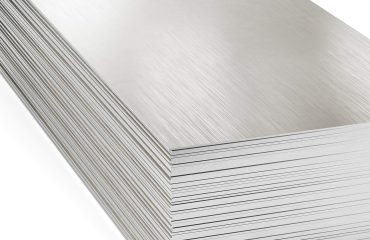
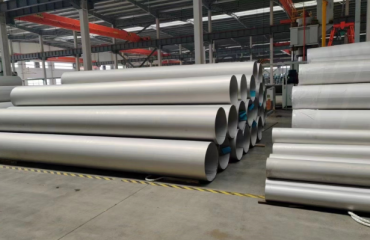
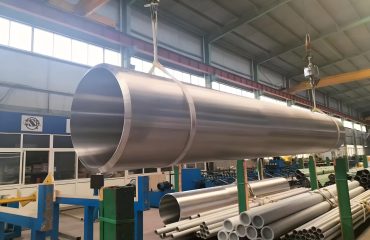
You must be logged in to post a comment.